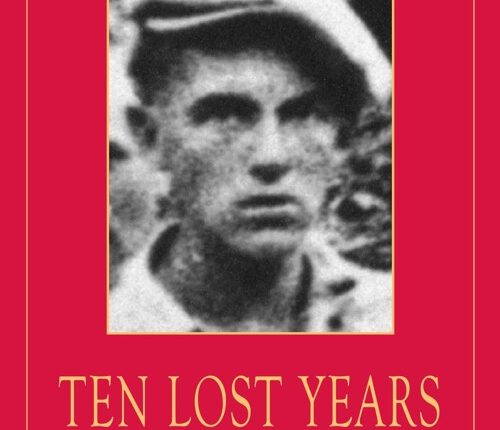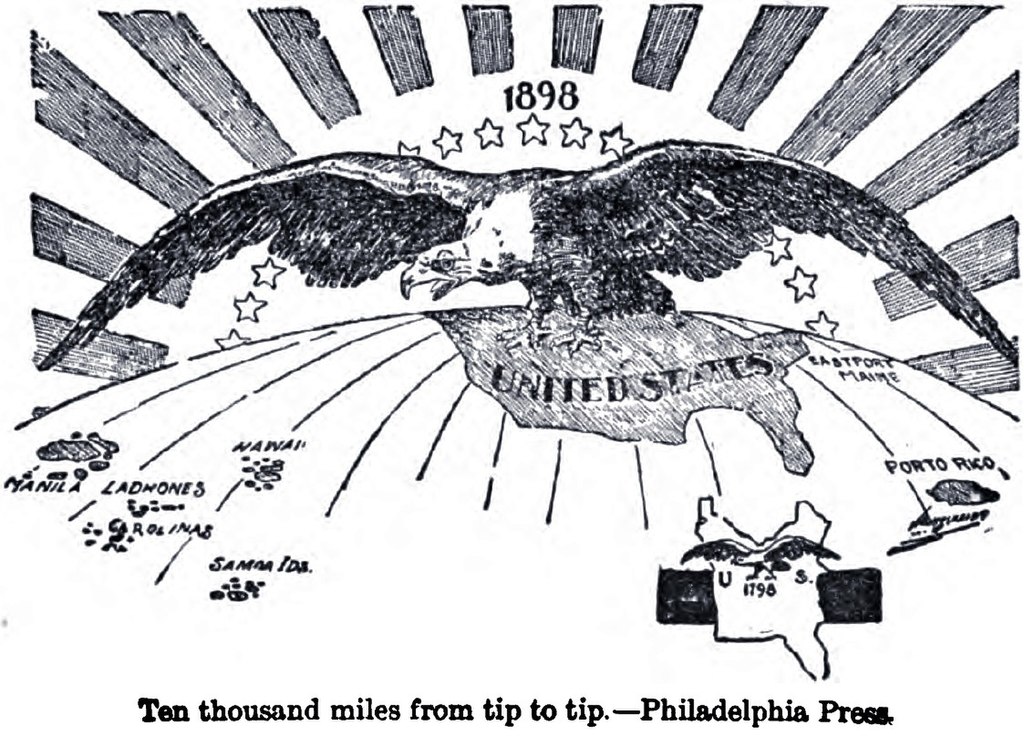Short lived were the days of the mid-2010s where wokeness could be portrayed as a new phenomenon mostly confined to college campuses. Conservatives realized it wasn’t true that the blue-haired Social Justice Warriors of viral YouTube clips would soon be meeting ‘the real world’, with its lack of safe spaces – ‘the real world’ was electing Justin Trudeau, who agreed with them.
Quickly it became almost an entry-level insight on the right that wokeness was just a slightly new form of the long-dominant ideology of the 1960s. In that decade, egalitarianism and anti-racism were enshrined as the highest ideals, and the prior history of the Western world reinterpreted as profoundly ‘problematic’. Deeper reading revealed even the sixties radicals were pushing at a door already half-open – the truly groundbreaking work had been accomplished in the first half of the twentieth century.
It shouldn’t surprise us then that our immigration problem has deep roots. In my previous article, I noted that the impulsive radicalism of the Trudeau government has made it difficult for even the mainstream media to deny we have an immigration problem. But deception is still well alive. The most dishonest try reviving the faux-patriotic sentimentalism common to the early pandemic: things like the housing crisis are treated as natural disasters we will ‘get through together’ rather than the consequence of policies that can be ended and reversed. The rest tend to act like it is only now time to “start talking about immigration”, which previously was beneath good manners.
Studying the history reveals a different story, and I’ve found a worthy guide in Charles Campbell’s 2001 book Betrayal and Deceit: The Politics of Canadian Immigration, which covers most of the second half of the twentieth century. Born in 1913, Campbell had a long career as a miner and then worked for ten years on the Immigration Appeal Board, including as vice-chairman. The book is valuable not just for setting facts straight, but also for its enlightening anecdotes that may not be documented anywhere else, and as a picture of a different era of immigration reform activism for us in the age of Conestoga College.
A passage early on in the book shows that Justin Trudeau’s approach to immigration is by no means avant-garde, but inherited from the sixties and his father:
“Until the mid-1960s, the overwhelming majority of both immigration and refugee admissions were judgment calls made by experienced visa officers at Canada’s overseas consular posts. The nation has the right to decide, prior to their arrival at its border, who can come in was the operative principle…Following the 1968 election, the Trudeau government began the quiet transfer of visa offices from the traditional source countries to the Third World.” [my emphasis] (p.6).
So, two policies overturned: that (refugee) cases would be processed outside of the country, and that we prefer migrants from Europe over the Third World.
The first had a simple economic justification. Campbell cites a statement an RCMP officer gave to the Vancouver Sun in a 1998 article estimating that just one refugee claimant costs the taxpayer $50,000. The officer proposed a solution: “Stop them before they get on the plane.” (p.4) Twenty-six years later, we know not only was this advice not heeded, but things have been arranged so that no current RCMP officer would make such a statement publicly. Only by referencing this culture of censorship can we explain why many Canadians don’t know that anyone can fly into our airports, claim to be a refugee, and live here off the taxpayer while their costly case is being considered – and that their entitlement to all this is supposedly deduced from the axioms of the Charter of Rights and Freedoms.
The justification for the second point, national preferences, is of course sensitive; I follow Campbell in temporarily abandoning value judgements to ponder facts. Campbell cites an official study from 1995 by the House of Commons Committee on Labour, Employment and Immigration that confirmed what many already suspected. Immigrants from before 1971 earned the same as Canadian-born workers, whereas after the shift to non-traditional source countries, those who came post-1971 earned less. Clearly this shift came with a decrease in the average productivity, and some from this may assume other important traits, of the population.
The originally cited quote highlights that the transfer away from European migration was done ‘quietly’, i.e. surreptitiously. At this point Canadians could still reasonably conceive of Canada as a unique bicultural nation, Anglo-French with some closely related Germans, Italians and Irish. For most of them, the more ‘sensitive’ idea was the suggestion that waves of migrants from poorer and, if culturally rich, very foreign places like India, Jamaica, and China, would bring primarily positive changes.
If to soften the people’s prejudices the changes were promoted as rational and meritocratic ‘colour-blindness’, it wasn’t long before it was clear that the real principle steering our border policy was that any standards that led to an ethnic bias were ipso facto proof of them being corrupt. In America Franz Boas triumphed over Madison Grant and soon we marched in step. But as time went on it was found that maintaining support for the original plan depended on moralistic appeals, fudging economic data and the illusion of inexorability.
This excellent essay explores how by the end of the 20th century, after the fall of the Soviet Union, the dogmas of the sixties were under threat – not from reactionaries wistful for the fifties but from new evidence presented by a variety of writers and researchers from both the social and hard sciences. In addition to examples like the one cited above, tables and graphs fill Betrayal and Deceit showing how through a variety of metrics our immigration policy had long been irrational and knowingly destructive.
Social science findings like these, and more profound ones documented by writers like Charles Murray at a similar time, should have led to a rebuke of the sixties ideology that informed our policies, most crucially immigration. But in what now can only be seen as a mournful failure of the right-wing of the time, the opportunity was bungled, and the sixties ideology seemed to gain new steam in the early 21st century.
This historical episode, along with the rise of significant challengers again since the mid-2010s, should put an end to us talking about the sixties ideology as inevitably hegemonic instead of passé and running on borrowed time. This isn’t a substitute for action, but to counter the inane quietism and fatalism that impedes it.
Bernier, who polls best in the 18-29 age bracket (only nine points behind the Liberals), provides a good example in this post “…[the left’s] cultural and ideological influence may have peaked”. Instead of promoting demoralization, we should be emphasizing that Century Initiative admirer Andrew Coyne is having a meltdown about the fact that half of young Canadian men (and what if we discount those not born here?) are Trump supporters, while the transformation of Yonge-Dundas square to ‘Sankofa’ is meeting almost universal disapproval.
Campbell proceeds to describe how damaging the vast ‘Family Class’ of migrants are, of whom not even basic language skills were demanded. Our approach to this class, as with the one towards ‘refugees’ which went far beyond generosity, was absurd in light of the strict ‘points system’ that prevented others from coming (from countries like Britain) who would have actually benefited the country and immediately assimilated. Campbell’s emphasis on the grip that ideologically and ethnically motivated activists had over the ‘immigration industry’ is still relevant today: corporate jockeying for cheap labour cannot, amongst many other things, explain why we are housing migrants in hotels in Niagara Falls who aren’t worth the minimum wage.
But the highlight of the book for me is in the anecdotes and profiles Campbell provides. One in the first few pages of the book recounts how immigration officers in Toronto in the 80s were ordered by their superiors to not dispute any refugee claims from 25 countries, including from places like Sri Lanka (p.3). Stories like this are powerful in bolstering our broader historical revisionism of the 20th century: not the moral discoveries of the people triumphing upwards through the institutions, but a top-down blitzkrieg, confused officers of the law suddenly told to stop doing their jobs.
Another is the curious case of Gordon Fairweather. Fairweather was the founding chairman of the Immigration and Refugee Board of Canada, and his influence was significant enough in the Mulroney era for him to be crowned the ‘immigration czar’ by the media – a title Campbell assures us was duly earned. Here is how Wikipedia summarizes the career of this ‘well-known Red Tory’ in charge of the border:
“[he] supported abortion rights, bilingualism, the abolition of capital punishment, same-sex marriage…homosexuality… he urged addition to the Charter of protections based on physical handicap, marital status, and sexual orientation.”
Not very stirring, but the interesting part in the discussion of Fairweather is the following quote, which Campbell prefaces by noting that many ethnic organizations existed to assist their racial kin in entering Canada. This was Fairweather’s reaction to a European organization doing the same thing:
“European immigration is blatant bigotry and the kind of thing people used to say when they said white immigration only. It’s something from the past that most of us would want to forget.” [my emphasis] (p 99).
At a time when descendants of Europeans still made up ~94% of the country, and the organization in question did not even seem to be suggesting anything like ‘white immigration only’, this is not just saccharine compared to the Campbell-style rationalism that should have been guiding our policy, but completely bizarre. The second sentence reveals a man, no college radical (Fairweather was born in 1923), who was such a fervent believer in the New Ways that he was practically haunted by his country’s character before his fortieth birthday.
I wrote here the most hopeful picture I could muster in our dire situation. Bernier went from voting for a woke gender bill to founding the People’s Party in a few years because he heard a Jordan Peterson speech. We shouldn’t think it’s impossible, as the only option left to us, to achieve the same effect with the man who will be Prime Minister in two years (this is a first step perhaps).
Posting on X, emailing MPs, sharing articles from Dominion Review and elsewhere all count for something. But let us take a moment to stare into the abyss. In a political climate where the Conservatives could be holding Trumpian rallies declaring war on the Century Initiative, their leader is meekly adorning a turban to tell Indians who have families overseas how much he supports immigration – a policy which almost uniquely benefits them and which the majority is sick of. In another clip he’s shown rallying for 700 students about to be deported to a paltry audience of New Canadians: ‘our population is too old, we need them’. It has long been known that our immigration model does little to fix that problem, and it’s hard to imagine a more galling statement when bright young people who were born here are emigrating or forgoing kids because of the effects of mass immigration. There is no logic to importing food delivery drivers or anyone else to replace them, but for now Poilievre appears to want to extend the tradition of betrayal and deceit even as a virile wind blows in the other direction.
All content on this website is copyrighted, and cannot be republished or reproduced without permission.
Share this article!




The truth does not fear investigation.
You can help support Dominion Review!
Dominion Review is entirely funded by readers. I am proud to publish hard-hitting columns and in-depth journalism with no paywall, no government grants, and no deference to political correctness and prevailing orthodoxies. If you appreciate this publication and want to help it grow and provide novel and dissenting perspectives to more Canadians, consider subscribing on Patreon for $5/month.
- Riley Donovan, editor